Hornetaur
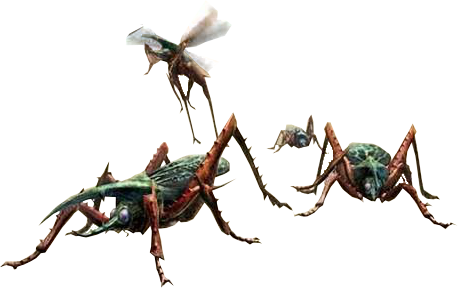
A Vespoid-like monster with a thick shell. Easily damaged, there are rarely any usable materials left to harvest from them once killed. But if you could sap their health gradually...Like the related Vespoid, they are highly susceptible to poison. Due to their small size, many find them difficult to hit directly.
Kill Count: 216
Vespoid
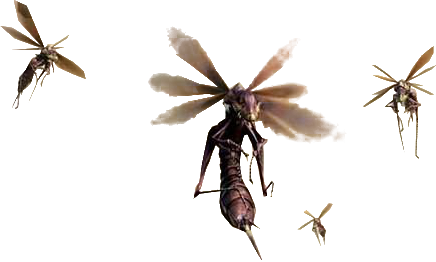
Vespoids are wasp-like insects roughly the size of a housecat. They have barbed stingers at the end of their abdomens, and fly using three pairs of wings. An enormous, wasp-like insectoid with a poisonous stinger that paralyzes prey. Easily damaged, there are rarely any usable parts left to harvest from them once they are killed.
Kill Count: 828
Bnahabra
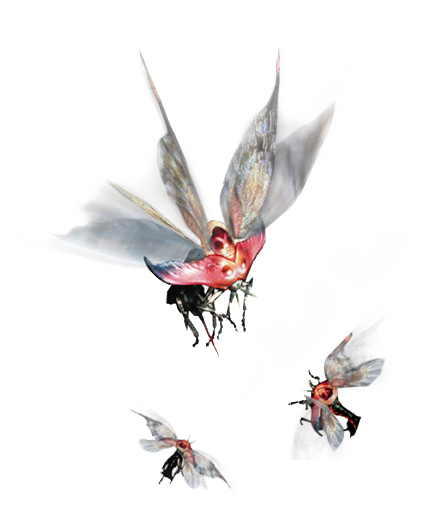
Bnahabra are similar to the Vespoid from previous generations. Bnahabra fly in a similar fashion and can also cause paralysis with their stingers. There are various subspecies of the Bnahabra which vary between the regions, each with distinctly colored wings. Bnahabra are often seen attached to the sides of the walls seemingly lifeless, until a hunter is close enough - then they fly away or attack. Bnahabra are similar to the Vespoid from previous generations. Bnahabra fly in a similar fashion and can also cause paralysis with their stingers. There are various subspecies of the Bnahabra which vary between the regions, each with distinctly colored wings. Bnahabra are often seen attached to the sides of the walls seemingly lifeless, until a hunter is close enough - then they fly away or attack.
Kill Count: 4,024
Altaroth
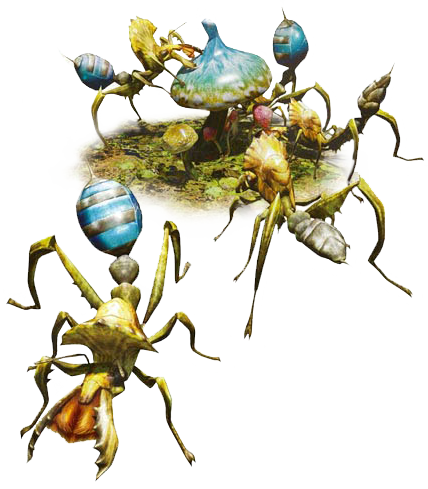
Insects that widely inhabit many areas. Noted for absorbing fruit, mushrooms and honey, then carrying them back to their nest. Materials can thus be collected from their swollen abdomens, whose color is related to what is being carried. An interesting note about the Altaroth is that they can absorb mushrooms, berries, and other resources into the sacs on their backs. When hunters kill an Altaroth in this state, they will drop a shiny item depending on what they have absorbed. This can be taken to an advantage; if a hunter were to intercept and collect the resource the Altaroth was heading for, before the Altaroth reaches their target, the Altaroth will move on, and can be forced to consume one specific type of plant or mushroom. The hunter can then kill the Altaroth to gain the item dropped. The swelling of their sacs is indicated by different colors depending on what they have eaten.
Kill Count: 1,880
Konchu
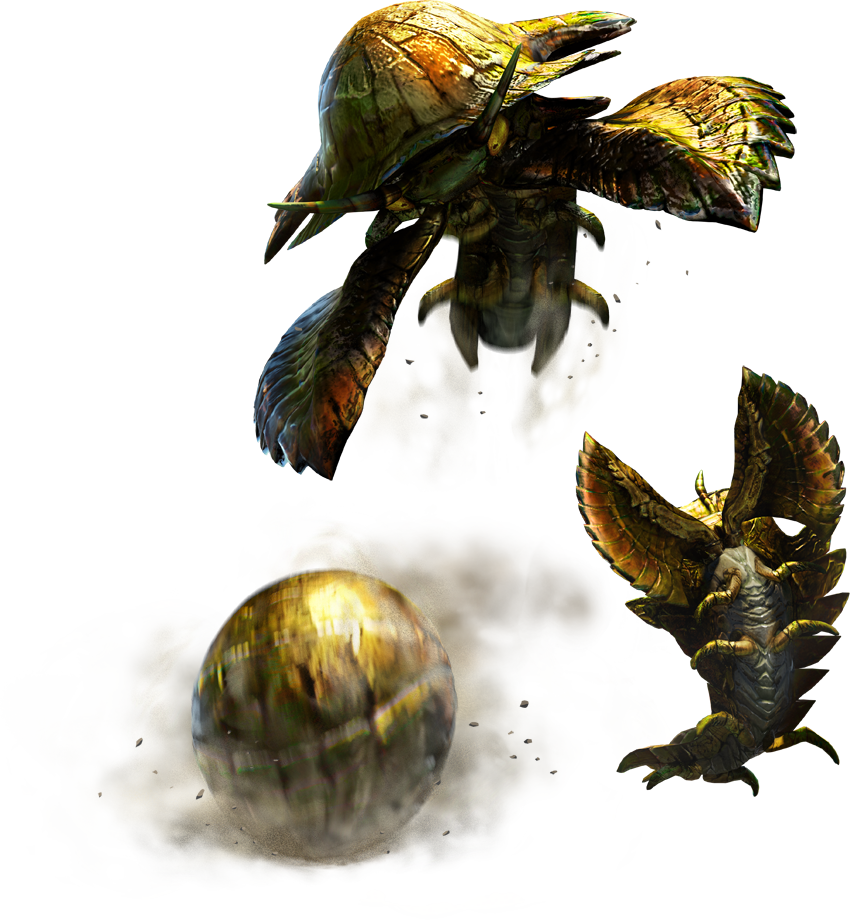
Neopterons that travel widely for food and can survive in almost any environment. Konchu roll into balls both to protect themselves and to fend off threats. Their sturdy shells are fairly easy to procure and are highly prized by armorers. Konchu have hard shells and can roll into a ball and attack in groups for protection, although they are still frequently preyed upon by Yian Kut-Ku and Yian Garuga.
Kill Count: 1,135
Kelbi
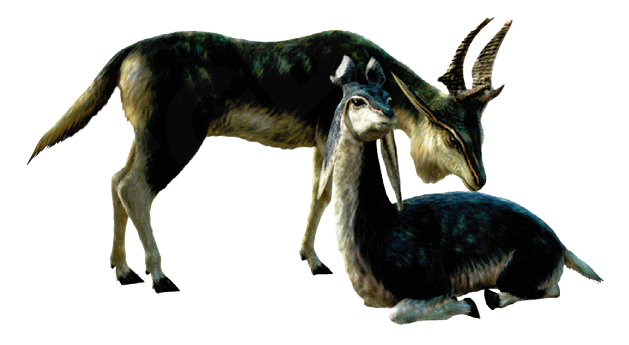
Herbivorous, deer-like monsters. Valued for their horns, they tend to run away at the first hint of danger. They are also hunted for their meat, which is chewy but flavorful. Kelbi are very small deer-like creatures that pose very little threat. They are usually either green (male) or blue (female or juvenile). Males have large, prominent horns, with some individuals having massive, curved horns. These large specimens are often referred to as a Kelbidrome. Females are smaller and have stunted horns. Interestingly, their horns are used in medicine and are said to cure many diseases.
Kill Count: 7,247
Mosswine
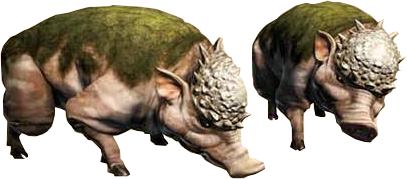
Wild pigs covered in moss and fungus. Sometimes you will even find mushrooms growing on them. Their meat is known as a delicacy. Though normally docile, they will charge you if angered! Mosswine are small, moss-covered pigs. They have a gray, spiky head plate. Mosswine are known to have a great appetite for mushrooms. Hunters and marketers commonly observe them to identify an area of Special Mushrooms.
Kill Count: 133
Anteka
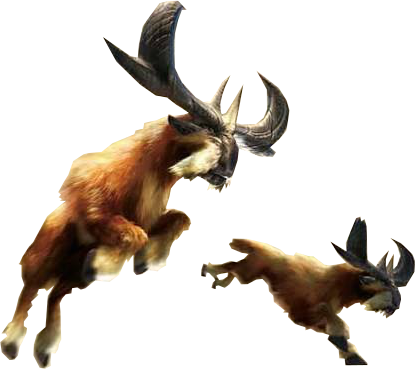
Herbivorous monsters living in the snowy mountains. Normally docile, but when provoked it will attack with its giant antlers. Its high quality pelt has many uses and its antlers are highly valued by the Guild. Anteka is commonly perceived as the snowy region's counterpart to the Kelbi of the forest and jungle regions. It walks on four hoofed feet and sports a large, impressive pair of antlers upon its head.
Kill Count: 207
Moofah
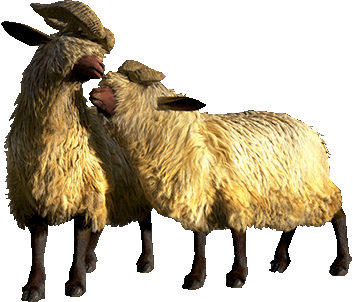
Small herbivores that can be found on the Deserted Island. Their soft, high-quality fur has been used since ancient times in clothing and ceremonial tools, and can be shaved off of them with cutting weapons. They are docile and raised as livestock in many regions. Moofah are docile alpaca-like creatures known for their long shaggy fur. Males have longer horns than females. Domesticated Moofah have lighter-colored fur than their wild counterparts, and wear colored bows and bells.
Kill Count: 192
Bullfango
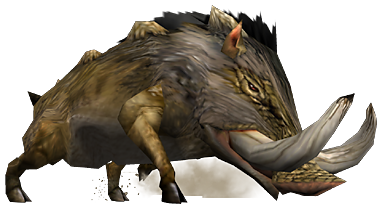
A large wild boar. Foul tempered, they will charge hunters on sight. They are aggressive and powerful, so beware! They are often hunted for their meat, which many hunters find delicious. Although veteran hunters can generally take them out easily, they can be dangerous for beginners and may even pose a threat to more experienced hunters when several attack at once. They can be extremely irritating when fighting a large monster in their territory; their charges may come unexpected from behind and knock the hunter to the ground, leaving them at the mercy of the larger monster.
Kill Count: 1,016
Rhenoplos
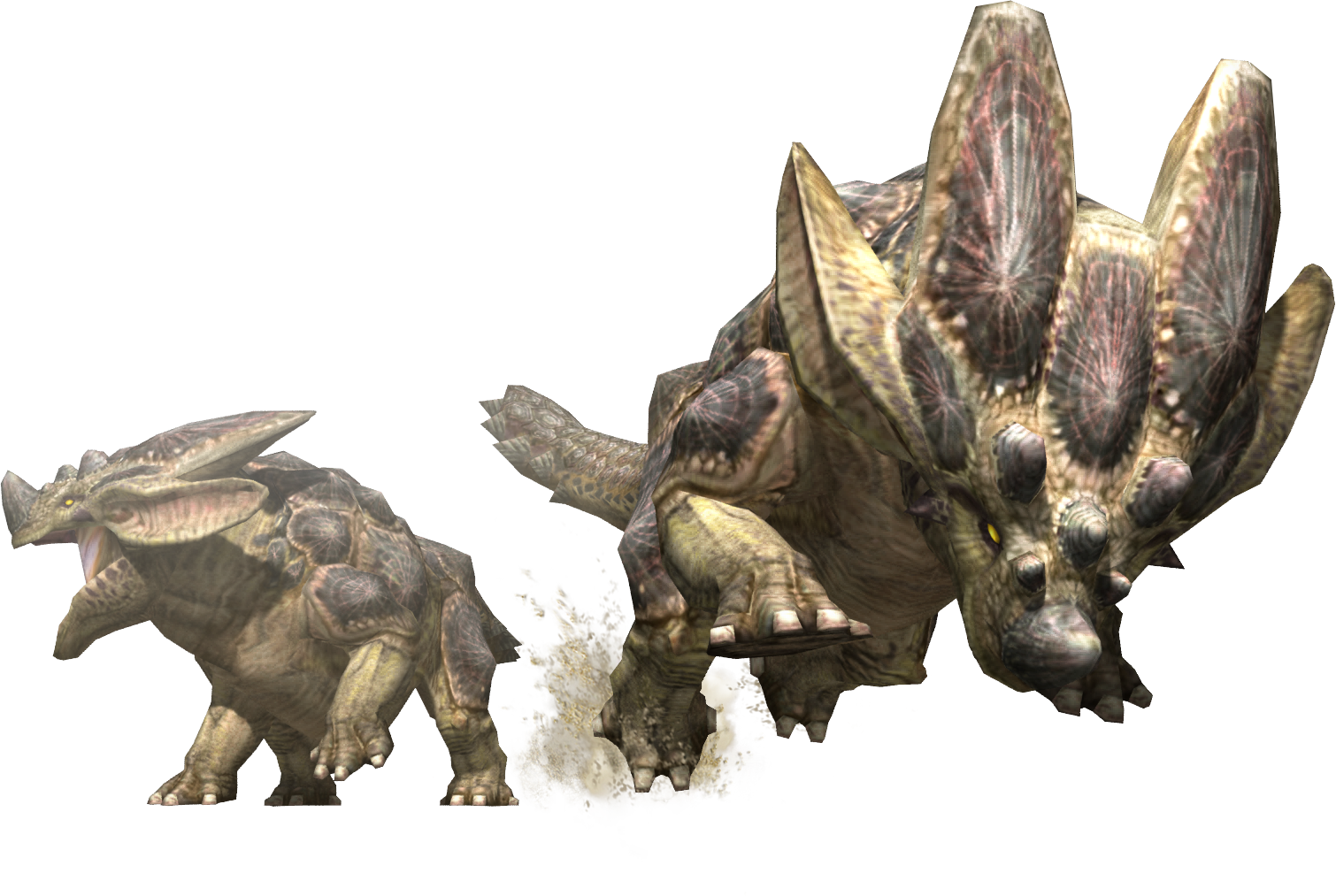
Extremely territorial herbivores with poor vision but acute hearing. Rhenoplos will doggedly pursue any nearby targets they sense. They often collide into boulders, perhaps because they can't easily stop themselves once they begin running. Rhenoplos is a quadrupedal, Ceratopsian-like monster with an armored body. Its face features a small nose horn and is surrounded by a frill.
Kill Count: 885
Popo
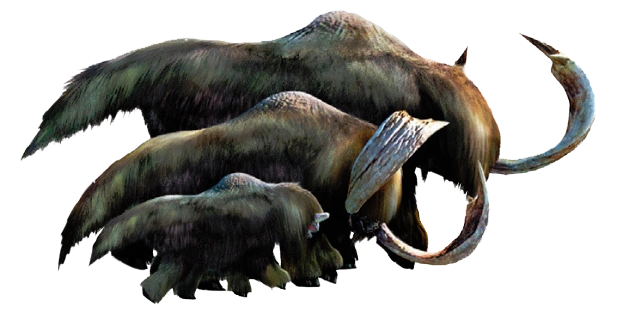
A herbivorous monster known for its giant, bent fangs. Living in herds, it is particularly bold when defending its offspring. Popo meat is quite nutritious, and its tongue is widely admired as a delicacy. Popo are very docile creatures and will run when one of their members in a group is under attack or when a Wyvern enters their area. They will also group together when a large monster is near, like the Aptonoth in more temperate climates.
Kill Count: 478
Epioth
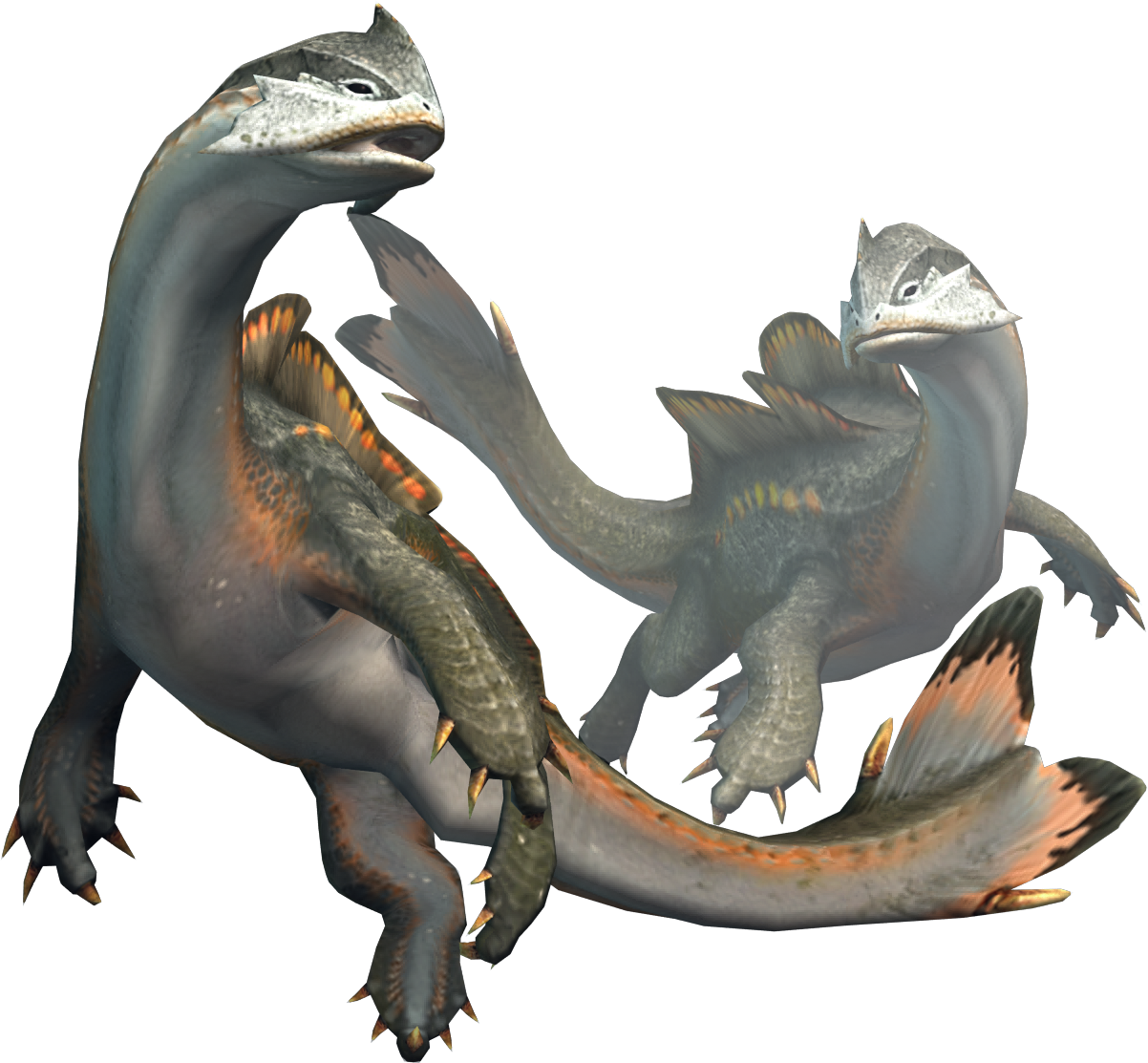
Submissive, water dwelling herbivores that subsist on water grasses and moss. Epioth frequently surface to sunbathe. Extremely timid, they panic when danger is near, swimming about in a haphazard fashion. Being very timid creatures, they will generally flee when attacked. However, they will occasionally fight back with slams and tail slaps. These however are not strong and they are easily brought down. They will swim around underwater and occasionally come to the surface. They only occasionally stop, allowing hunters to attack.
Kill Count: 1,155
Slagtoth
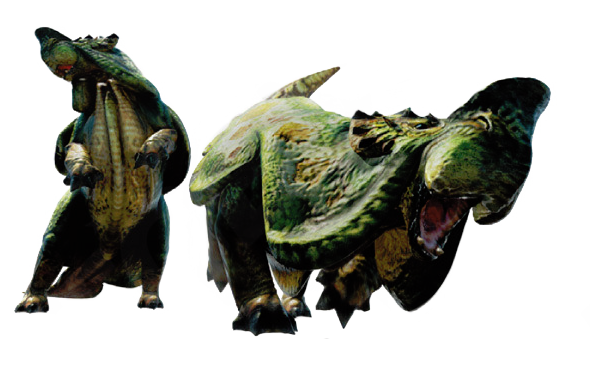
Herbivores that live near water in the Volcano and Flooded Forest. Their heavy, sagging hides store nutrients, and are prized for their resistance to heat and water. Males are quite territorial, often refusing to flee from even invading wyverns. Slagtoth have green, saggy hides covering most of their body, most notably drooping near the sides of the head and along their flanks. They have pale yellow underbellies and black crests and noses.
Kill Count: 362
Aptonoth
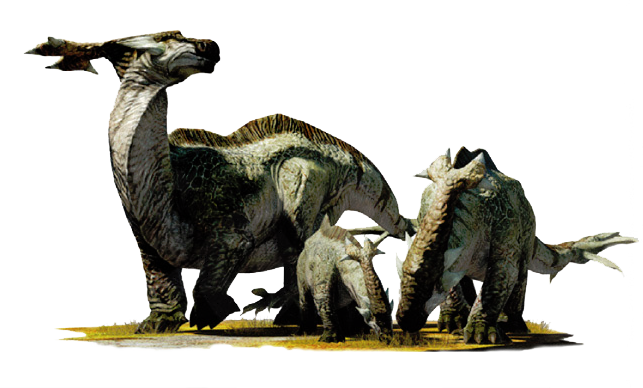
Aptonoth are cow-like creatures with leathery gray skin. They have black stripes along their backs and a head reminiscent of a Hadrosaur. They have a large, two-pronged crest protruding from their heads and a flat, spiked tail. Aptonoth are hunted as a food source. These creatures are preyed upon by both hunter and monster alike. Though usually timid, in packs they will defend themselves with surprising strength.
Kill Count: 2,023
Apceros
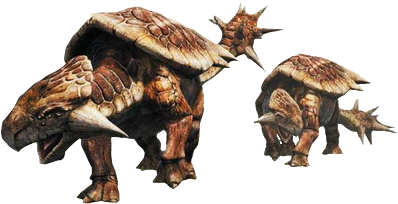
Apceros are herbivorous reptiles that frequent desert and volcanic areas. They have a body structure similar to Aptonoth, their evolutionary cousins. They have many characteristics of tortoises, such as head shape and protective shell. Their tails have a developed mace-like structure on the end that is covered with sharp spikes. Hunted for their meat, which is buried under a thick, armored hide. Aggressive compared to the Aptonoth, hunting them can be a challenge. Apceros eggs are a valuable guild commodity.
Kill Count: 236
Larinoth
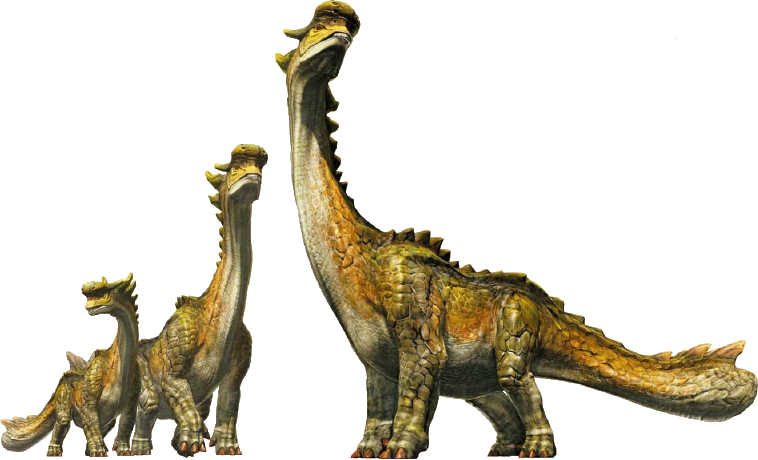
These giant herbivores are peaceful towards hunters unless their young are threatened. Their long necks let them eat hard-to-reach leaves and nuts, which they may drop if attacked while feeding, and eat constantly to maintain their size. They also have a unique sound-producing organs. Larinoth are quite huge monsters, compared to other herbivores and even many large monsters. It possesses a great height, which is mostly attributed to its extremely lengthy neck. The tail of a Larinoth is rounded and club-like, with spiked plating that runs along the back and up to the crest on its head. Said plating is nearly entirely green, and the Larinoth's underbelly is a cream color.
Kill Count: 86
Gargwa
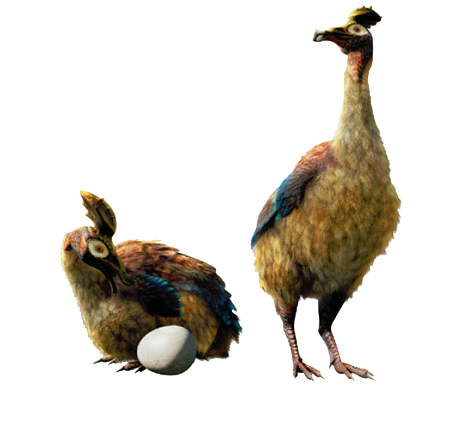
Flightless bird wyverns with vestigial wings. They can often be found roaming wild in the Misty Peaks, but are also raised as livestock in Yukumo Village. Quite timid, Gargwa have been known to lay eggs when startled. Gargwa have very small, likely vestigial wings. Like most species of Herbivore, they're normally docile creatures but will attack and flee when they're threatened. They coexist with the people of Yukumo village as livestock, but they have been known to attack Hunters from time to time.
Kill Count: 308
Genprey
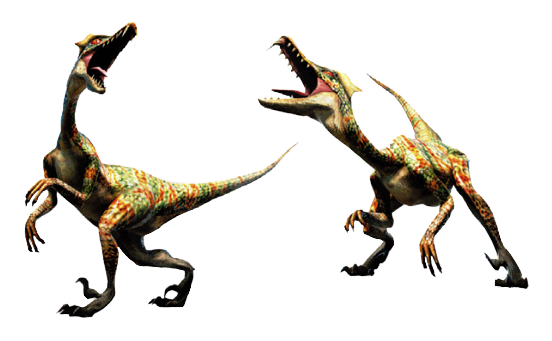
An orange and green-striped species of small carnivores found mainly in desert zones. Traveling in packs, their large fangs and claws contain a neurotoxin that is used to paralyze prey. Their bodies are covered in a colorful yellow and green hide, with a pair of yellow crests over their eyes.
Kill Count: 719
Loprey
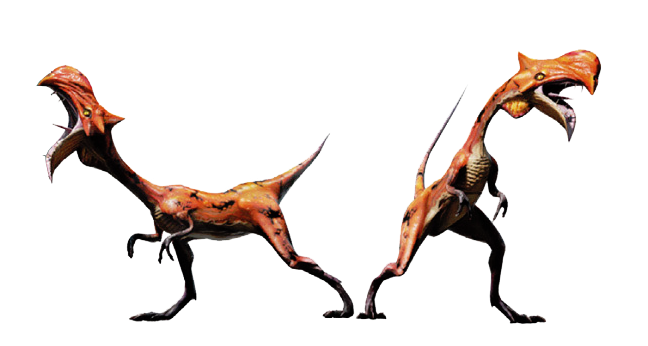
A vivid red species of small carnivores often found in subtropical zones. Sacs in their throat contain a powerful poison that slowly drains the health of their prey. Ioprey have lithe, raptor-esque bodies. They have vivid red skin, with some black markings and purplish lavender colouration by the limbs. Ioprey have very distinctive head crests, large and well rounded. Their lower jaw curls outwards significantly.
Kill Count: 1,271
Velociprey
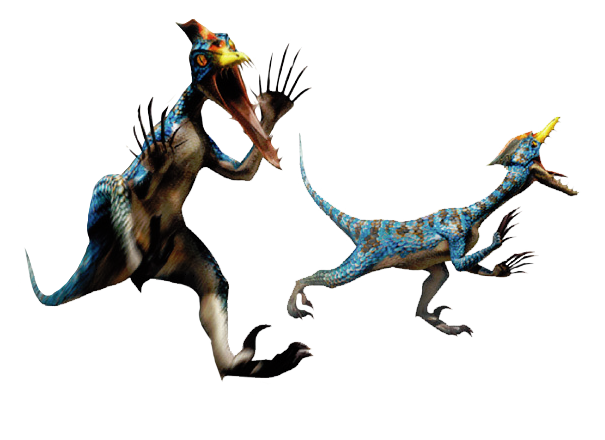
Aggressive, carnivorous monsters that often travel in packs. Even a master hunter should take care not to become surrounded! Wide ranging, they are found in many different areas, such as the Jungle or Forest and Hills. They have blue scales with black stripes, and a dull red crest on their heads. These carnivorous monsters travel in packs and inhabit many different environments.
Kill Count: 616
Giaprey
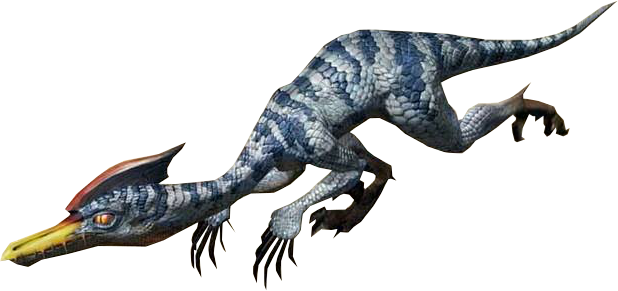
A species of small bird-like carnivores known to inhabit the snowy mountains. Their white skin is beautiful, but their temperament is not. They are known to spit ice at hunters, and attack in deadly packs. They have crystal blue scales with sky blue stripes. Although they are of a different species, White Velociprey have been seen in packs of Velociprey. Like all of the '-prey' family, this sub-species also fights in a pack.
Kill Count: 266

